It is with pleasure that we introduce our Authors of the Month for March, Jason Jarrell and Sarah Farmer, with Ages of the Giants: A Cultural History of the Tall Ones in Prehistoric America.
A product of extensive fieldwork and scrutiny of archaeological literature, Ages of the Giants traces the history, traditions, cosmology and settlement patterns of the ancient Tall Ones across four millennia.
This article describes some of the content of Ages of the Giants: A Cultural History of the Tall Ones in Prehistoric America, in which the authors utilise hundreds of archaeological and historical sources to document the history of a unique type of humankind that existed among prehistoric Americans for thousands of years. The remains of these individuals are described in reliable accounts as possessing great stature, ranging between 7 and 8 feet in height, as well as large, thick crania and massive lower jawbones. It was by no means the entire population, which possessed these unique characteristics, but rather a distinct segment thereof.
While these remains have given rise to the concept of the “ancient giants” of North America, the great Native American scholar and activist Vine Deloria, Jr., provided a more fitting term after consulting indigenous tradition:
From talking with elders of several tribes, my understanding is that the Indians were and are describing people of more than average height. In fact, some elders as a routine matter have reported that the Indians themselves were much larger and taller. A more general description of these people used by traditional elders is “the tall ones.” This phrase implies cultural behavior comparable to the Indians in many respects, physical size being one important distinction that made these people memorable. (1:139)
Ages of the Giants cross references notable discoveries with the cultural history outlined in professional archaeological literature. The book is formatted to serve as a timeline, documenting the history of the Tall Ones from the Late Archaic Period (3500—1000 BC) in the Great Lakes region to the Woodland Period (1000 BC—450 AD) of the Ohio River Valley. The Woodland Period is notable for the emergence of the Adena and Hopewell mound builders. Building on the pioneering work of Ross Hamilton (2), Ages records discoveries from Adena mounds by official sources, beginning with the work of the Bureau of American Ethnology of the Smithsonian in the late 1800s.
In 1883 and 1884, P.W. Norris of the Smithsonian investigated 50 Adena mounds and 10 earthwork enclosures, located on both sides of the Kanawha River at Charleston, West Virginia. Within the Great Smith Mound (35 feet in height), Norris found an elaborate timber structure containing 6 burials. The chamber was 13 feet long and 12 feet wide, reaching as high as 9 feet with a sloping roof. The following description of the central burial comes from the official field report:
Nineteen feet from the top…in the remains of a bark coffin, a skeleton, measuring 7 ½ feet in length and 19 inches across the shoulders, was discovered. It lay on the bottom of the vault stretched horizontally on the back…Each wrist was encircled by six heavy copper bracelets…(3)
Norris reported finding large skeletal remains in several other Adena mounds at Charleston, including Mound 11, which was part of a large earthwork enclosure at Spring Hill overlooking the Kanawha Valley:
In the center, 3 feet below the surface, was a vault 8 feet long and 3 feet wide. In the bottom of this, among the decayed fragments of bark wrappings, lay a skeleton fully 7 feet long, extended at full length on the back, head west. Lying in a circle immediately above the hips were fifty-two perforated shell disks…(3)
Antiquarians outside of the Smithsonian also discovered the Tall Ones in Ohio Valley mounds. For example, on May 31st, 1897, the Daily Public Ledger reported, “Ten skeletons were found in two mounds by Dr. Loveberry, curator of the Ohio state university museum, one that of a giant fully eight feet tall.” Indeed, Clarence Loveberry excavated two mounds on the Briggs farm, four miles north of Chillicothe Ohio, in Union township, in May 1897. The following is a description of one of the burials from Loveberry’s own report:
Five feet deep, in the central part of the structure we found a fourth skeleton. The bones were the largest I ever removed from a mound. All joints were exceedingly massive and the muscular attachments were wonderfully developed. Badly decayed as it was, the longer bones were sound enough for me to make these observations. (4)
In spite of the current taboo attached to the subject, very large skeletal remains from Adena mounds were recorded by official sources well into the 20th century (the book records instances as recent as the 1980s). William S. Webb (University of Kentucky) explored numerous Adena mounds in Kentucky, and his valuable site reports serve as foundational material for Adena studies to the present day. In 1950 and 1951, Webb excavated the Dover Mound in Mason County, Kentucky. Near the top of the mound, he found “a group of four extended bodies—three males between the ages of 25 and 30, and a female about 13 years old—placed at the centre of a heavy bark layer about fifteen feet in diameter”, numbered burials 40-43 (5), p. 22. According to Webb, “The remains of burial 40 is one of the largest known to Adena; the skull-foot field measurement is 84 inches [7 feet].” (ibid)
Between June and August of 1958, Don W. Dragoo (Curator of the Section of Man at the Carnegie Museum of Natural History) excavated the Cresap Mound in Marshall County, West Virginia. In a subsurface tomb on the eastern side of the mound, Dragoo discovered Burial 54:
The large male found in subfloor tomb F.28 was exceptional in height. Measurements taken of the skeleton while still in the grave indicated an individual approximately 7.2 feet tall. (6, p. 72)
This individual was of large proportions. When measured in the tomb his length was approximately 7.04 feet. All the long bones were heavy and possessed marked eminences for the attachment of muscles. (ibid, p. 67)
Both Webb and Dragoo devoted considerable space in their essential works to Adena anthropology, pointing out the large lower jawbones and rugged, powerful builds of the skeletal remains (7). Sometime after 200 BC, the Hopewell Culture developed from an Adena foundation in the Scioto Valley in south-central Ohio. Throughout the Middle Woodland Period (200 BC-500 AD), extra-regional extensions or variations of Hopewell emerged throughout the eastern U.S., from southern Ontario to the Gulf Coast, forming the “Hopewell Interaction Sphere”. Some anthropological studies suggest that people buried in the tombs of widely separated Hopewellian cultures were biologically related (8). This could indicate that some level of intermarriage or mate exchange facilitated genetic, as well as cultural connections.
The Dunleith group of at least twenty-six Hopewellian mounds is located in Gramercy Park, overlooking the city of East Dubuque, Illinois. The Bureau of Ethnology explored the Dunleith mounds in 1882, with the following burial recorded in a Smithsonian document:
Near the original surface, 10 or 12 feet from the center, on the lower side, was one of the largest skeletons discovered by the Bureau agents, the length as proved by actual measurement being between 7 and 8 feet. (3, p. 113)
P.W. Norris also discovered large skeletal remains in a mound on the Hume farm in Pike County:
Among these were a number of bones not together as skeletons, but mingled in confusion…Excepting one, which was rather more than 7 feet long, these skeletons appeared to be of medium size and many of them much decayed. (3), p. 117.
Archaeologist George Quimby considered the Sumnerville Mound Group along Dowagiac Creek in Cass County, Michigan to be a type-site of the Goodall Tradition, a Hopewellian culture in areas of Indiana and western Michigan (9). In 1878, Doctors Evan and Bonine excavated one of the Sumnerville mounds on behalf of the Smithsonian, with details recorded in Alfred Matthews’ History of Cass County, Michigan (1882):
Portions of the skeletons were in a good state of preservation. The femur, or thigh bone, of one of the males, which Dr. Bonine has now in his possession, is of great size and indicates that its owner must have been at least seven feet in height. (9, p.13)
The cultures who buried the Tall Ones in their tombs are the subjects of ongoing and intense archaeological research, and a primary purpose of Ages of the Giants is to shed light on the ritual practices and life-ways of these ancient people. One subject discussed in the book is the prehistoric copper industry of the Great Lakes region, which was exploited for thousands of years by a succession of different cultures. Accelerator Mass Spectrometry (AMS) allows for the dating of copper objects by showing the age of organic fragments adhering to (and partially preserved by) the artefacts. AMS methods have recently dated two copper conical points from Vilas County, Wisconsin to 5740 +/- 40 BC and 5355 +/- 60 BC. (10) Clearly, copper metallurgy in North America is of great antiquity, and by the second millennium BC, the metal was being used for the production of prestigious ornamental artefacts, ranging from bracelets and beads to headdresses in the shapes of feathers, antlers, and crowns. Scientific experiments by avocational archaeologists have also revealed that some copper artefacts were made by melting and casting the copper, a discovery which contradicts the prevailing and “acceptable” establishment narrative that insists that ancient Americans never developed such technology (11).
The foundations of the Late Archaic and Woodland cultures was an ancient “cult of the dead”, which reached its ultimate expression in the monumental earthworks and burial mounds of the Adena and Hopewell cultures. Current archaeological theory suggests that the burial of the dead in both natural and artificial mounds could have been intended to reference the Axis Mundi or World Tree. The Axis Mundi connected three primary realms consisting of an earth plain situated between an Above Realm and a Lower Realm or underworld (12). Through mortuary ritual, ceremonial leaders may have sought to facilitate the travel of the souls of the dead between realms. The burial of the dead from multiple communities together in the Axis Mundi likely represented the adoption of a common ancestry and mythic origins, concepts that solidified ties between multiple dispersed communities (13). The symbolism of elaborately carved stone and clay tablets found in Adena mounds in Kentucky, Ohio, and West Virginia, as well as several Hopewell copper artifacts suggests that the shamans or ritual specialists themselves traveled the Axis Mundi in trance states, interacting with the spirits or Manitous inhabiting the cosmos.
Adena and Hopewell ritual specialists engaged in a form of totemic animism. At the Dover Mound, William S Webb discovered what were probably the remains of an Adena shaman in burial 9 (5). The burial was of a ruggedly built male, 35-40 years old, and 5 feet 5 inches tall. Near the skull were two large mica sheets, and on each side of the jaw were two pieces of the jaw of a puma. The body was adorned with several copper artifacts, including two copper bracelets on the left arm, a copper spiral ring on the left hand, and a triangular copper pendant at the left shoulder. A series of mica crescents were found at the feet of the burial, along with three separate lumps of pigment—one white, another orange-brown, and the third of red ocher—which had probably originally been deposited in containers. Webb interpreted the puma jaws to be parts of a mask, and the mica crescents to have originally been decorations attached to a leather cloak or cape, the whole being the costume of a “puma man” shaman. Burial 9 also contained the bones of a 20-year-old female, who Webb considered to possibly have been a daughter or ritual assistant of the shaman. Shamanic paraphernalia similar to that of Dover Burial 9—including skull masks of bear, wildcat and wolf—have been found in other Adena mounds throughout the Ohio Valley.
These are just a few of the subjects that we have attempted to illuminate in Ages of the Giants. The book also delves into the ancient ritual sites, settlement systems, subsistence patterns, and socio-political structures of the ancient cultures that had the Tall Ones among them. Another contribution of note is made by artist Marcia K. Moore, who created the first ever life like recreations of living Adena and Hopewell people for the book, based on photographs and measurements of actual skeletal remains (14). Finally, by comparing details from official site reports with the legions of newspaper accounts describing discoveries of gigantic skeletons, we were able to verify, and in some cases debunk the discoveries (15).
It is hoped that this work will serve to add clarity to a subject that has been obscured for far too long.
References
- Vine Deloria, Jr., Red Earth, White Lies: Native Americans and the Myth of Scientific Fact, Fulcrum Publishing, 1995.
- Ross Hamilton, A Tradition of Giants: The Elite Social Hierarchy of American Prehistory, Ross Hamilton, Silverton, Ohio, 2007.
- 12th Annual Report of the Bureau of Ethnology to the Secretary of the Smithsonian Institution, ed. Cyrus Thomas, Washington, 1894.
- Presented by Warren K Moorehead in “Report of Field Work”, Ohio Archaeological and Historical Publications, Vol. 7, Columbus, 1899.
- William S. Webb, The Dover Mound, University of Kentucky Press, 1959.
- Don W. Dragoo, Mounds for the Dead: An Analysis of the Adena Culture, Annals of the Carnegie Museum, Vol. 37, 1963.
- See Don W. Dragoo, Mounds for the Dead: An Analysis of the Adena Culture, Annals of the Carnegie Museum, Vol. 37, 1963, and William S. Webb and Charles E. Snow, The Adena People, University of Kentucky, Lexington, 1945.
- Elizabeth Pennefather-O’Brien, Biological Affinities among Middle Woodland Populations Associated with the Hopewell Horizon, PhD Dissertation, Indiana University, Bloomington, 2006.
- George W. Quimby, “The Goodall Focus: An Analysis of Ten Hopewellian Components in Michigan and Indiana”, in Prehistoric Research Series, Vol. II (2), Indiana Historical Society, Indianapolis, 1941.
- Thomas C. Pleger and James B. Stoltman, “The Archaic Tradition in Wisconsin”, in Archaic Societies: Diversity and Complexity across the Midcontinent, ed. Thomas E. Emerson, Dale L. McElrath, and Andrew C. Fortier, State University of New York Press, 2009, pp. 697-523.
- See E.J. Neiburger, “A Metallographic Analysis of the Old Copper Osceola, Wisconsin Site: 1900 to 1200 B.C.E.” Central States Archaeological Journal Vol. 59 (3), and “A Documented Case of Prehistoric America Copper Casting Technology”, Central States Archaeological Journal, 57 (2), p.76.
- Christopher Carr, “World View and the Dynamics of Change: The Beginning and the end of Scioto Hopewell Culture and Lifeways”, The Scioto Hopewell and Their Neighbors: Bioarchaeological Documentation and Cultural Understanding, ed. D. Troy Case and Christopher Carr, Springer Science and Business Media, 2008, pp. 289-333.
- Christopher Carr, “The Tripartite Ceremonial Alliance among Scioto Hopewellian Communities and the Question of Social Ranking”, in Gathering Hopewell: Society, Ritual, and Ritual Interaction, ed. Christopher Carr and D. Troy Case, Springer, 2006, pp. 258-338.
- See Adena and Hopewell recreations at www.paradigmcollision.com, and www.marciakmoore.com.
- Jason Jarrell, “Press Accounts of Gigantic Skeletons from Adena, Hopewell, and Mississippian Burial Mounds Verified and Debunked by Primary Archaeological Sources”.






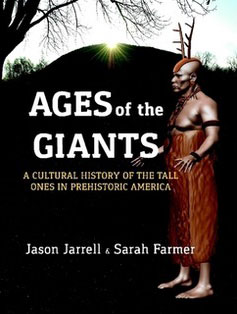

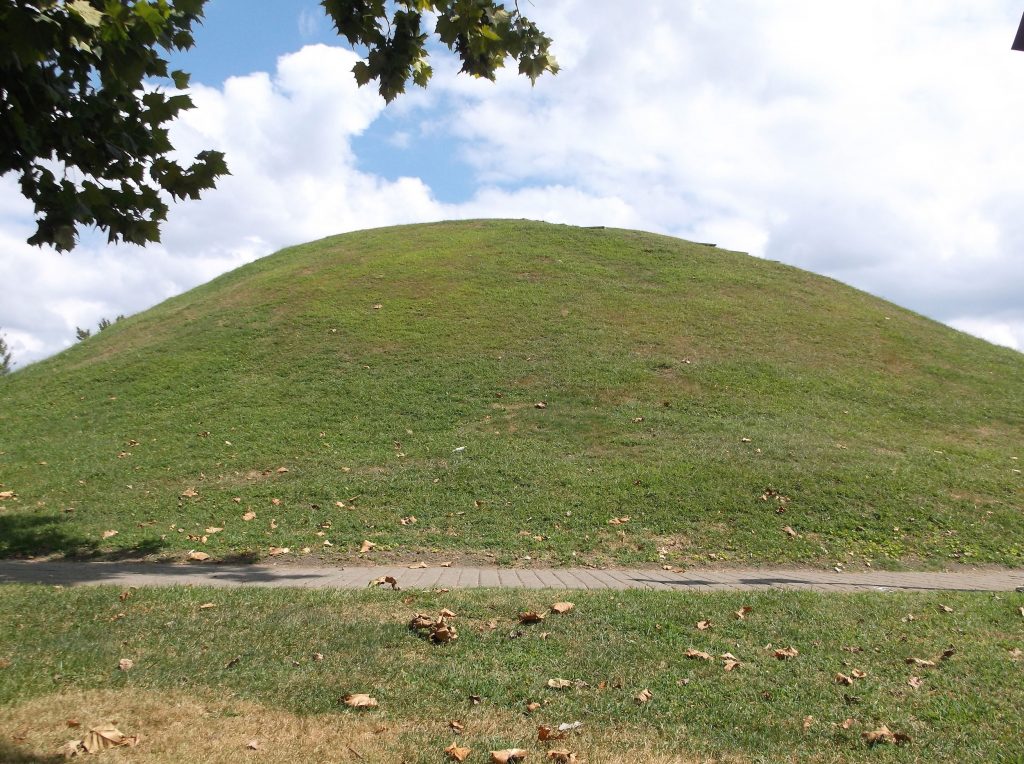

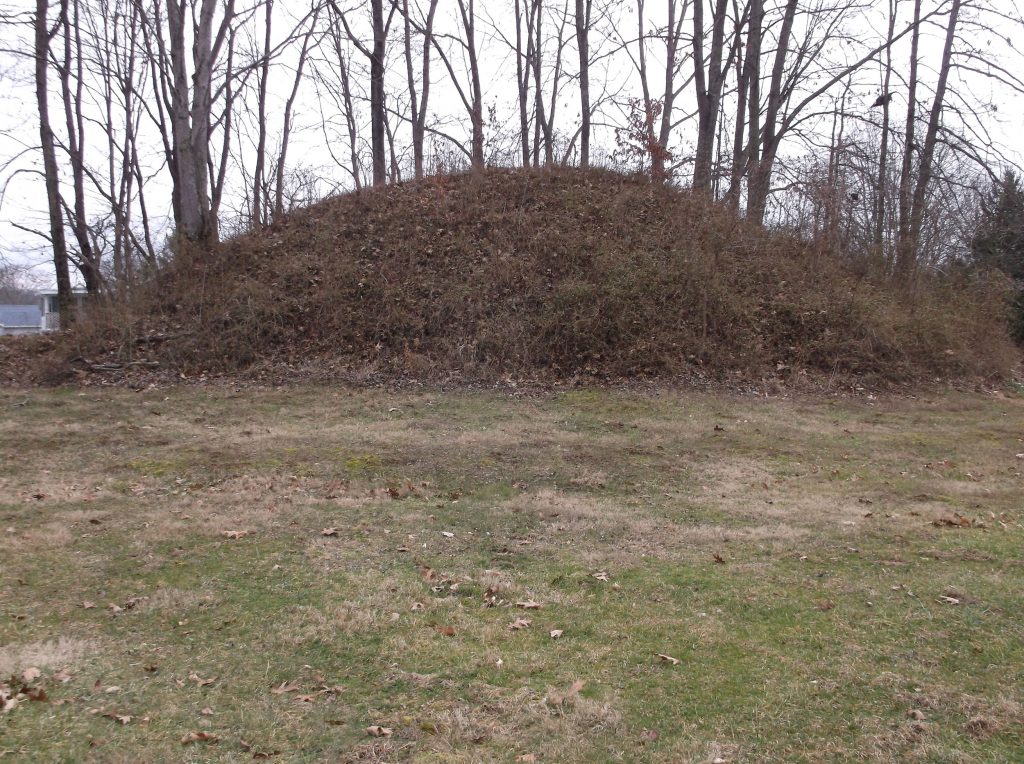

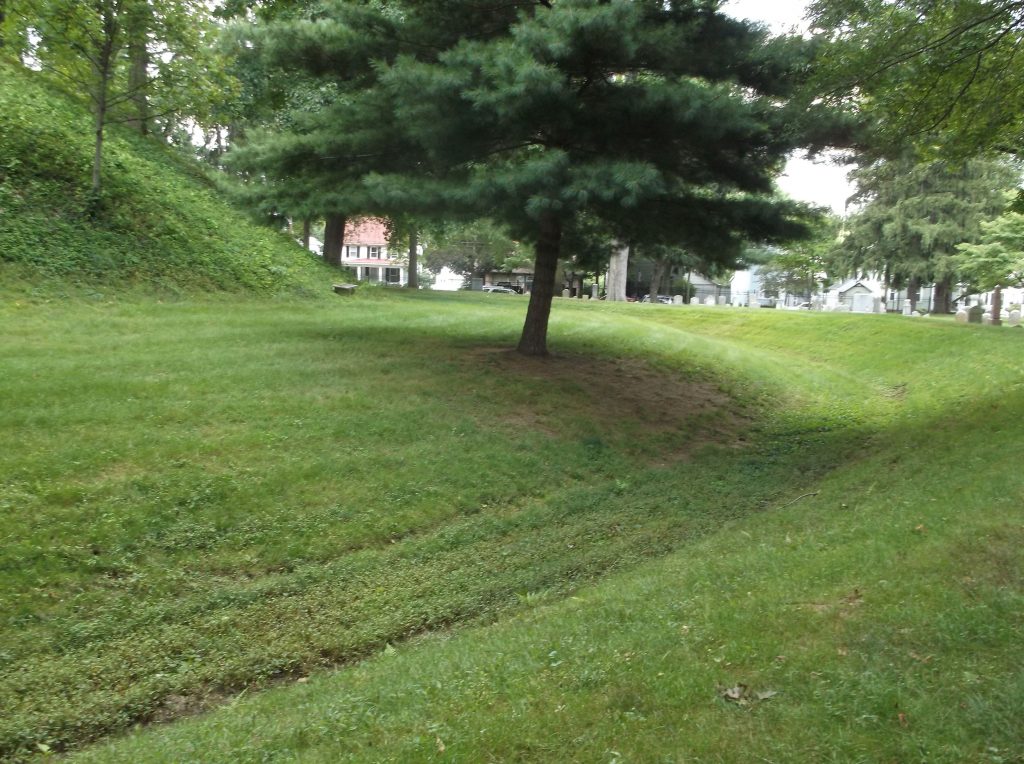
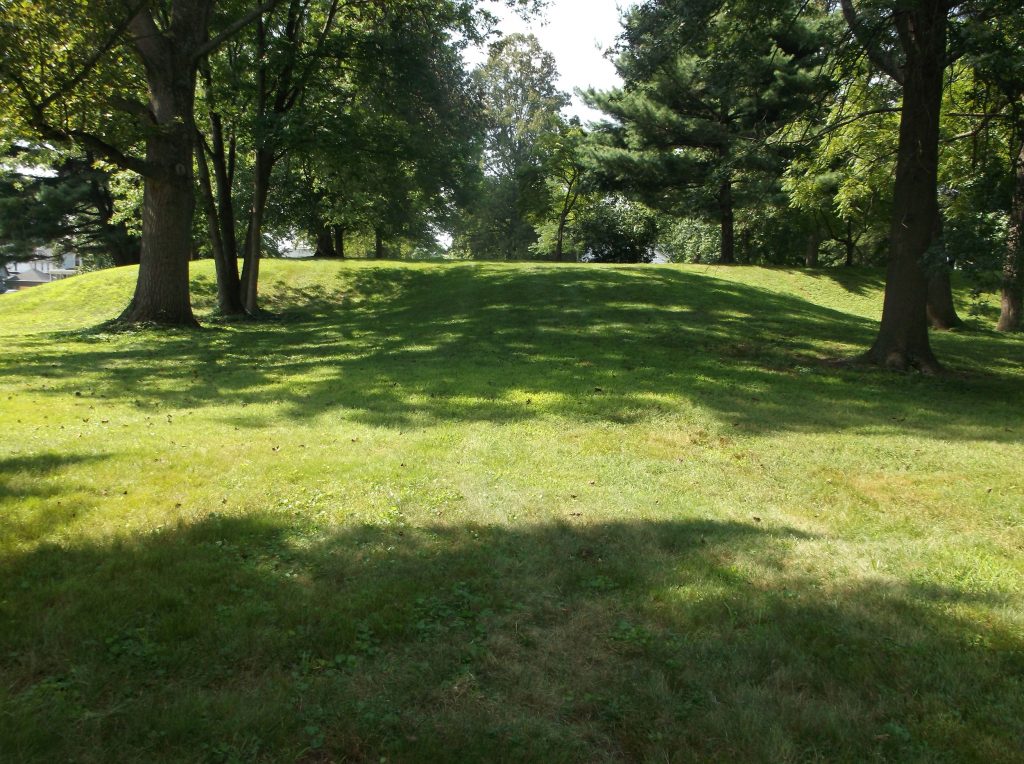
They never taught me this in school. i believe lincoln quoted something about these mounds. I have seen a mummified man 9 ft tall with huge muscular structure. he was a sideshow in the 1800’s “olaf the viking”i was convinced it was real. it has since vanished, much of this kind of thing seems to be disappearing.
Well Olaf the Viking did disappear for a while. I knew where Olaf was a few years back, in a warehouse in Northern Nevada as part of a greater collection of sideshow and other memorabilia. I tried to arrange purchase of Olaf, but the deal fell through. Olaf is believed to be in a private collection these days.
My family is from central and northern Kentucky. The interesting thing is that my great grandfather was over 7′-0″ tall and probably one of the most brilliant men to ever come out of the mountains of Kentucky. He was a doctor and a preacher until the Great Depression when he had to run moonshine to feed the family. After that, he would never preach because he felt as if he’d let his God down for his actions to keep food on the table. I am 54 years old and he was biggest man I’d ever seen until recent times with some of the NBA players they have found lurking in parts unknown. Very interesting article, this. Look forward to reading more about these “giants”.